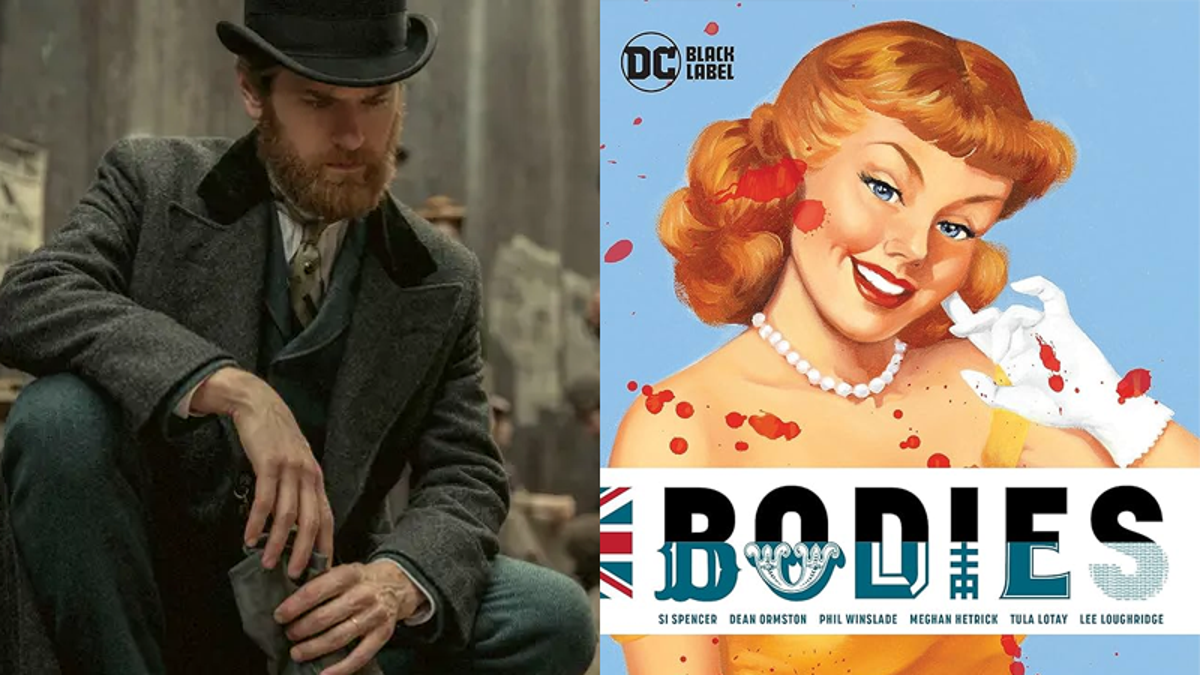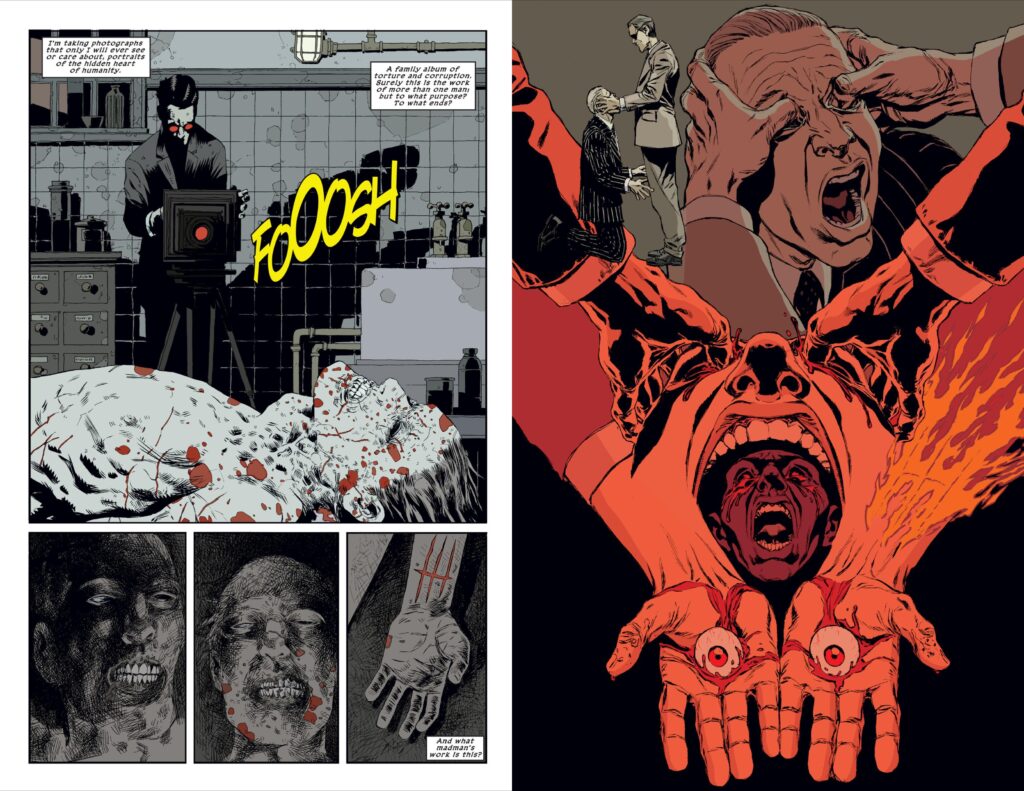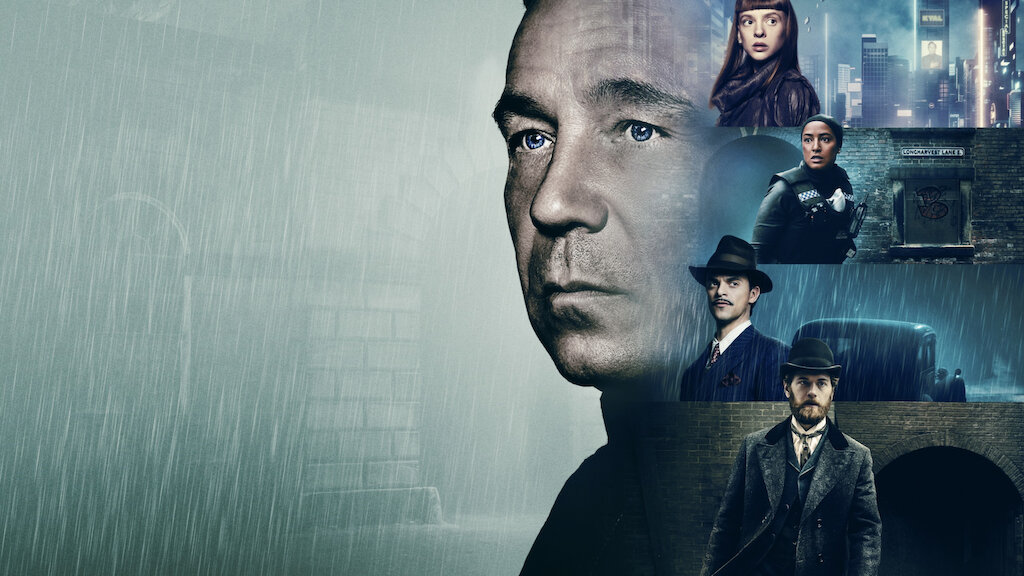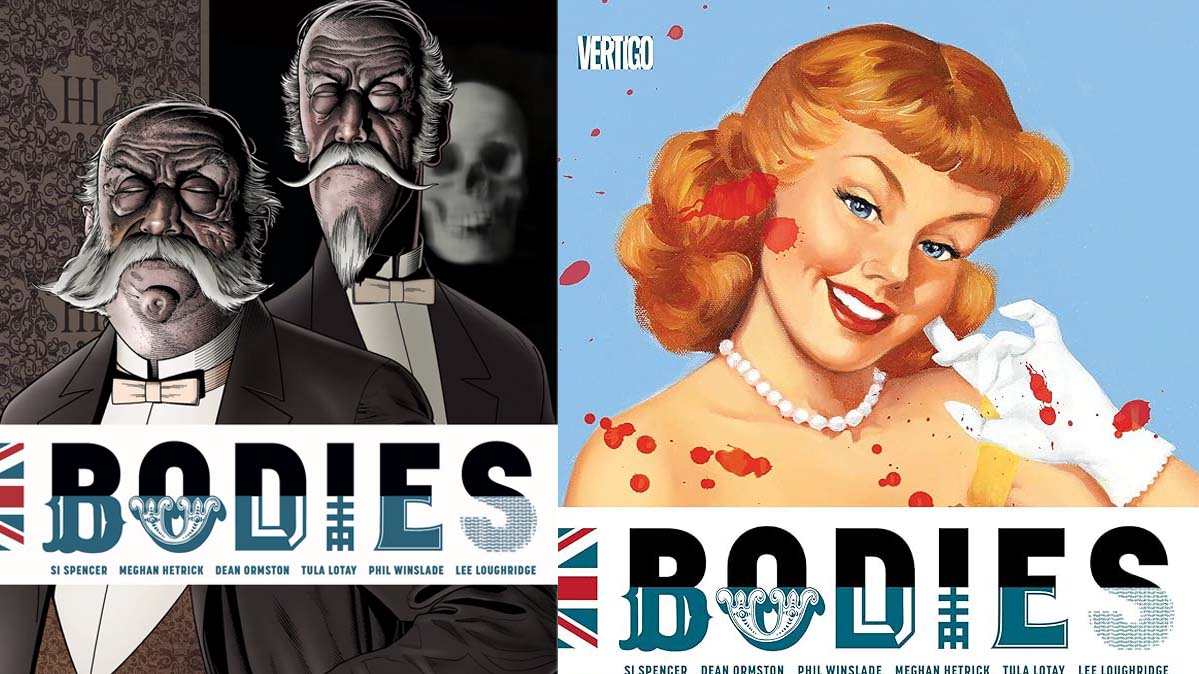“Bodies” has become a cultural phenomenon, captivating audiences as both a graphic novel and a Netflix series.
This gripping narrative explores complex themes and delivers an experience that is both thrilling and thought-provoking.
Let’s dive into the intricacies of this story, its adaptation, and why it has resonated with so many.
The Origin: “Bodies” the Graphic Novel
Author and Inspiration
Si Spencer, the brilliant mind behind “Bodies,” is renowned for his ability to weave intricate tales.
Published by DC Comics’ Vertigo imprint, “Bodies” was a standout release in 2014.
Spencer drew inspiration from historical events and urban settings to craft a narrative that spans multiple timelines, connecting seemingly unrelated characters through a mysterious murder.
Plot Overview
Multiple Timelines: The graphic novel unfolds across four different eras, each with a distinct detective:
- 1890s: Inspector Edmond Hillinghead investigates a body found in Whitechapel, London. Hillinghead is a meticulous and principled officer working in the wake of the Jack the Ripper murders, navigating the seedy underbelly of Victorian London.
- 1940s: Detective Charles Whiteman navigates a murder case amidst World War II chaos. Whiteman, a corrupt detective with a complicated past, struggles with personal demons and wartime pressures while solving the crime.
- 2010s: Detective Sergeant Shahara Hasan tackles a similar crime in modern London. Hasan, a British Muslim, faces contemporary issues of racism and terrorism fears, adding layers of social commentary to her investigation.
- 2050s: Detective Maplewood, in a dystopian future, seeks answers in a city crumbling under technological oppression. Suffering from memory issues and societal decay, Maplewood’s storyline explores themes of identity and reality in a heavily surveilled world.
Connecting Threads: Each detective discovers the same body in their respective timelines, leading to a mind-bending mystery that spans centuries. The novel explores themes of corruption, societal decay, and the cyclical nature of history. The body serves as a macabre anchor, tying together disparate periods and stories.

Artistic Collaboration
Illustrators: The graphic novel features artwork from multiple artists, each contributing to the distinct atmosphere of their respective timelines.
- Dean Ormston captures the grimy, foggy essence of the 1890s.
- Meghan Hetrick portrays the gritty, war-torn 1940s.
- Phil Winslade provides a modern, realistic take on the 2010s.
- Tula Lotay creates a haunting, surreal vision of the 2050s.
Critical Reception
Praise and Criticism:
- Engaging Plot: Critics lauded Spencer for his complex narrative structure and engaging storytelling. The intertwining timelines were seen as a masterstroke in mystery writing.
- Character Depth: Readers appreciated the deep character development across different eras. Each detective’s unique challenges and personalities added richness to the story.
- Pacing Issues: Some found the shifting timelines challenging to follow, which occasionally disrupted the narrative flow. However, many felt this complexity added to the novel’s allure.

The Netflix Adaptation
Development and Production
Bringing “Bodies” to the Screen: Netflix, known for its bold adaptations, saw immense potential in Spencer’s work.
The series was developed by a talented team of writers and directors who aimed to stay true to the source material while enhancing the visual storytelling experience.
Key figures in the adaptation included writer Paul Tomalin and director Marco Kreutzpaintner, who meticulously crafted each episode to reflect the novel’s tone and depth.
Casting Choices
Star-Studded Ensemble:
- Jacob Fortune-Lloyd as Inspector Hillinghead. His portrayal captures the character’s stern yet compassionate nature, making the Victorian timeline particularly engaging.
- Stephen Graham as Detective Whiteman. Graham brings a raw intensity to the corrupt, conflicted detective of the 1940s.
- Amaka Okafor as DS Hasan. Okafor’s performance adds emotional depth and realism to the modern-day segments.
- Kyle Soller as Detective Maplewood. Soller’s depiction of a detective grappling with memory loss in a dystopian future is both haunting and compelling.
Visual Aesthetics
Era-Specific Set Design: The production team meticulously recreated each timeline’s unique atmosphere, from the foggy streets of Victorian London to the neon-lit dystopian future.
- Cinematography: The use of different color palettes and filming techniques helped distinguish between eras, enhancing the storytelling. For instance, sepia tones dominate the 1890s scenes, while the 2050s are characterized by cold, metallic hues.
- Special Effects: Subtle yet effective use of CGI brought futuristic elements to life without overshadowing the narrative. The seamless integration of visual effects ensured the story remained the focal point.
Reception and Impact
Critical Acclaim:
- Faithful Adaptation: Fans of the graphic novel appreciated the series’ loyalty to the source material. The adaptation managed to capture the essence of Spencer’s storytelling while adding visual flair.
- Visual Masterpiece: Critics praised the show’s visual storytelling and attention to detail. The era-specific aesthetics and atmospheric cinematography received particular acclaim.
- Narrative Complexity: While some viewers found the shifting timelines challenging, most appreciated the intricate plot. The series maintained the novel’s complexity, offering a rich, layered narrative.
Themes Explored
Time and Memory
Cyclical Nature of History: “Bodies” emphasizes how history often repeats itself, with each detective facing similar challenges despite the different eras. The persistent presence of the body underscores this theme, illustrating the inescapable cycle of human behavior.
- Memory and Identity: The characters’ personal histories significantly impact their actions and perspectives, highlighting the importance of memory in shaping identity. Maplewood’s struggle with memory in the dystopian future particularly emphasizes this theme, questioning the nature of reality and self.
Corruption and Power
Institutional Corruption: Across all timelines, characters encounter corruption within the institutions they serve, reflecting a pervasive theme of systemic decay. Whether it’s the police force, wartime bureaucracy, or futuristic governance, corruption remains a constant.
- Power Dynamics: The series delves into how power is wielded and abused, often with devastating consequences. Each detective’s journey reveals the complexities of power dynamics, from personal struggles to societal implications.

Why “Bodies” Resonates
Timeless Appeal
Relatable Themes: The exploration of corruption, power, and the human condition ensures the story remains relevant across generations. These themes are universal, making “Bodies” a compelling narrative for a wide audience.
- Complex Characters: Viewers and readers connect with the deeply flawed yet compelling characters, whose struggles mirror real-life issues. The characters’ personal journeys add emotional depth to the overarching mystery.
Innovative Storytelling
Non-Linear Narrative: The use of multiple timelines offers a fresh take on crime dramas, keeping audiences engaged and invested in solving the mystery. This structure not only adds complexity but also enhances the suspense and intrigue.
- Visual Storytelling: The Netflix adaptation’s stunning visuals and era-specific details enhance the narrative, creating an immersive experience. The graphic novel’s vivid artwork translates beautifully to the screen, offering a rich, visual feast.
“Bodies” is more than just a crime story; it’s a multifaceted exploration of time, memory, and societal decay.
Both the graphic novel and the Netflix series offer rich, engaging experiences that leave audiences pondering long after the final page is turned or the last episode is watched.
Dive into this captivating world and discover why it has captured the hearts and minds of so many.










